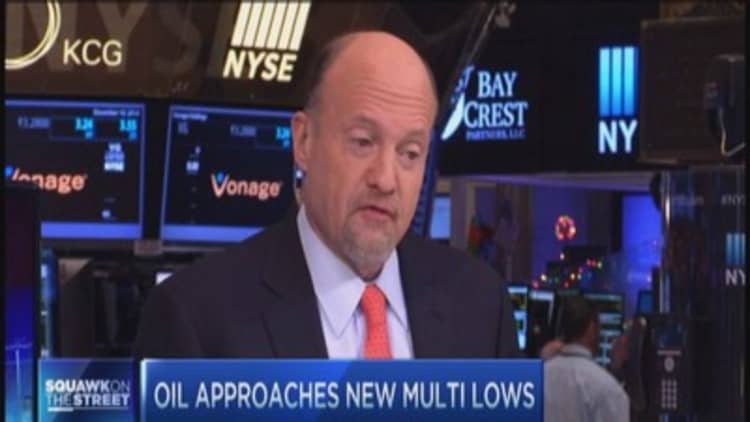Benchmark oil prices fell to new five-year lows after OPEC cut its demand outlook for global oil consumption and U.S. data showed a surprise jump in oil inventories.
In a monthly report, the Organization of the Petroleum Exporting Countries forecast demand for the group's oil will drop to 28.92 million barrels per day in 2015, down 280,000 bpd from its previous expectation.
U.S. crude futures for January settled 4.5 percent lower at $60.94 per barrel, the lowest since July 2009.
fell by nearly $3 to $64 a barrel, having earlier touched $60.63, a level not seen since July 16, 2009.
The U.S. government's Energy Information Administration showed U.S. commercial crude inventories climbed 1.5 million barrels last week. Analysts had anticipated a draw down of 2.2 million barrels. Stockpiles of U.S. crude stood at 380.8 million through the week ending Dec. 5.
Gasoline stocks also rose by 8.2 million barrels, compared with analysts' expectations in a Reuters poll for a 2.5 million-barrel build.
Read MoreThe countries slammed worst by plunging oil prices
The price of the North Sea oil benchmark has fallen more than 40 percent since June as new supplies of high-quality crude from North America have fed a glut of fuel in many parts of the world.

"There is a growing realization that the first half of next year is going to look very weak," said Gareth Lewis-Davies, strategist at BNP Paribas. "You start to price that in now."
Read MoreDon't look for oil glut to end any time soon
The U.S. Energy Information Administration cut its global oil demand growth estimate for 2015 by 240,000 barrels per day to 880,000 bpd. It forecast oil demand growth this year would be around 960,000 bpd.
Global oil demand has been capped by slowing economic growth in China as well as stagnation in many more-developed economies, particularly in Europe.
"The fundamental picture hasn't really changed, and that is one of supply outstripping demand growth for most of the year," said Phin Ziebell, a senior analyst at National Australia Bank.
"It's an incessant march downwards, and it would be interesting to see where it bottoms out, but there doesn't seem to be any sign of it so far."
Read MoreWill oil's drop hurt renewable energy?.
Members of OPEC are divided on how to respond to the global surplus and falling prices. The cartel may still hold an emergency meeting before its June gathering, Algeria's energy minister said on Tuesday.
Italian oil and energy group Eni said OPEC may cut output in the spring and that oil prices will remain between $66 and $75 per barrel next year.
Top oil producer Saudi Arabia blocked production cuts at the last meeting in November and has taken steps to shore up its market share
—CNBC.com contributed to this report.
Correction: Prices of U.S. crude futures and Brent futures were misstated in an earlier version of this article.

